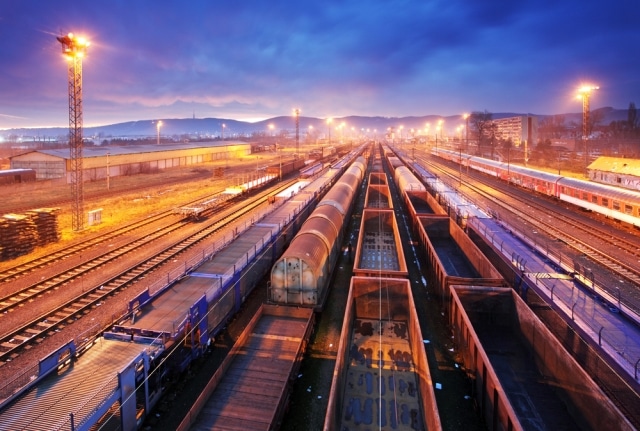In September, many of the major railroad stocks hit new all-time highs.
Investors Business Daily attributed much of the increase to the business of moving oil-by-rail.
While the majority of the oil moving by rail has been fracked light sweet crudes from places like the Bakken and Eagle Ford shale basins, the railroads are telling investors that to keep increasing profits they are looking to expand the business of tar sands by rail.
This past week, the Wall Street Journal reported Canadian Pacific’s chief operating officer Keith Creel’s optimistic position about the growth prospects of moving tar sands by rail.
“The growth is shifting from the light sweet Bakken crude which is the more volatile and sensitive, to the heavy crude in northern Alberta,” Creel said. “It’s safer, less volatile and more profitable to move and we’re uniquely positioned to connect to the West Coast as well as the East Coast.”
It’s new for rail companies to admit that moving tar sands by rail is more profitable than moving Bakken oil.
Oil Shipments Via Canadian Pacific Rail Set to Double
In 2013, Canadian Pacific moved 90,000 carloads of crude oil. In 2015, the company is predicting it will move more than twice that much and it expects “heavy crude oil from Alberta” to soon account for 60 per cent of its oil revenues. Currently Bakken crude accounts for the majority of the company’s oil business.
Canadian Pacific’s CEO Hunter Harrison also told the Wall Street Journal that the company is investing heavily, including upgrading four oil-by-rail terminals in Western Canada, upgrading tracks to allow for “longer, heavier trains and the doubling of speed along some of its track” all as part of plans to “ship Alberta oil east.”
Canadian Pacific is not alone in this approach. Platt’s reported that Canadian National is also planning a big increase in its movement of Western Canadian crude. In 2013, Canadian National shipped 73,000 cars of crude by rail and the company’s projection is to more than double that by 2015 to a total of 150,000 carloads.
Platts also reported that there has been significant investment in new tank cars to move all of this oil, indicating that the “order books of tank car manufacturers are bulging with 40,000 additional cars due to be delivered by late 2015 to carry more crude from Western Canada.”
Canadian Oil Exports Hit All-Time High
All of this contributed to Canadian oil exports to the U.S. hitting another all-time high for the first week of October at more than three million barrels a day. The Financial Post reported that oil market analyst Mike Tran of CIBC World Markets credited the increase to rail transport.
“As we’ve pointed out over recent weeks, the new high-water mark is indicative of a sizable pick-up in rail activity given that pipeline takeaway capacity has not increased.”
These developments along with other efforts previously reported by DeSmogBlog to move tar sands by rail to the East Coast for export indicate the growing use of rail to move Western Canadian tar sands oil. However, one of the areas benefiting most from this development are the West coast refineries that prefer heavy crudes.
“Refinery configuration in California is oriented toward heavy or medium sour crude, and the Canadian barrels, which are heavy and somewhat sour, are a better fit than the light Bakken barrels,” David Hackett of energy consultant Stillwater Associates told Bloomberg earlier this year.
California Imports of Canadian Oil Skyrocket
The increase in bringing Canadian crude to California is a recent development. In 2012, the highest monthly total for Canadian crude imported to California by rail was 63,163 barrels. In 2013, the highest monthly total was 11 times that much at 709,014 barrels. So far in 2014, 372,277 is the highest monthly total, but data is only available through July.
With the new USD Group facility coming online in the second half of 2014, as well as the Canexus tar sands rail loading facility being reactivated in late September, the second half numbers of 2014 will be interesting to monitor.
California refineries received 3.64 million barrels of crude-by-rail in the first six months of 2014. According to the Governor’s proposed budget summary, in 2016 California could be receiving as many as 150 million barrels of crude-by-rail annually.
While the recent drop in oil prices has producers in both the Bakken and the Western Canadian tar sands worried, both the oil and rail industries have been putting the pieces in place to significantly increase the movement of tar sands by rail.
The oil industry and the rail car industry have histories of betting wrong on the tail end of a boom in their business — only time will tell if this current bet pays off.
Subscribe to our newsletter
Stay up to date with DeSmog news and alerts






